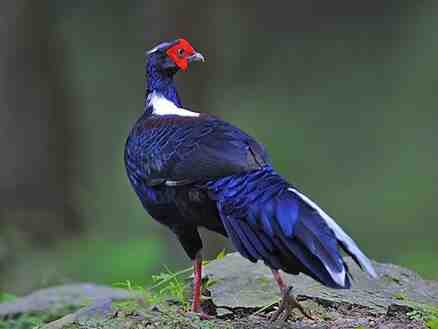
Crossoptilon crossoptilon
Crossoptilon crossoptilon,Blue-bellied Pheasant, Chinese Chicken, Taiwan Blue-bellied Pheasant,Lophura swinhoii,Taiwan Blue Pheasant,Swinhoe's Pheasant
Features:
Taiwan Blue Pheasant, with no subspecies, is a large pheasant.The blue pheasant is the same as the white pheasant. The local people in Taiwan, China often use the white tail feathers of the male blue pheasant as a hat ornament; live blue pheasants can also be exhibited (the first pair of live blue p...
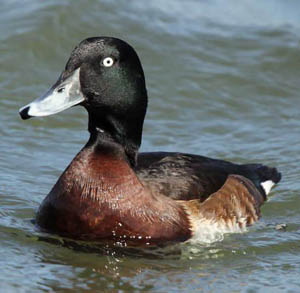
Aythya baeri
White-eyed duck, Oriental white-eye duck, Mallard duck,Aythya baeri,Baer's Pochard
Features:It rarely sings and is a deep-water bird that is good at diving by folding its wings.
The blue-headed duck is a migratory bird. It migrates from the wintering grounds in the south to the north for breeding in mid-March every year; it starts to migrate to the south in mid-October in autumn, and a few migrate as late as early November. During migration, it gathers in small groups of mo...
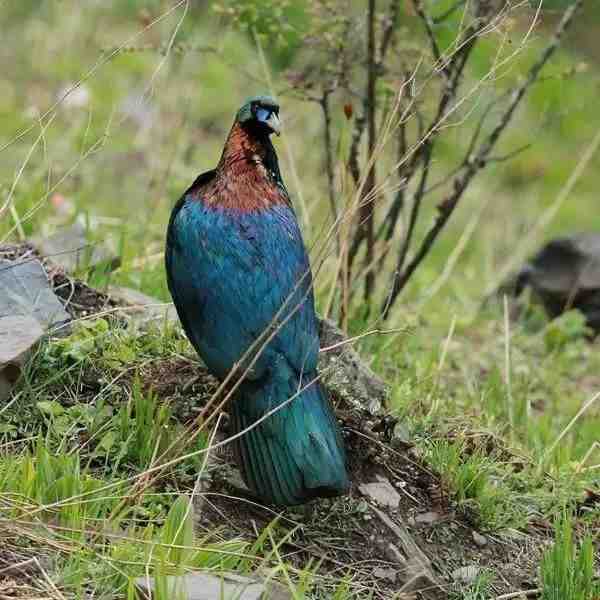
Lophophorus lhuysii
Fritillaria chicken, hawk chicken, charcoal chicken, lamb chicken,Lophophorus lhuysii,Chinese Monal,Chinese Impeyan
Features:Endemic to China, the city bird of Xichang, one of the most difficult birds to keep in the world
The Chinese Monal is a diurnal animal, often moving in pairs or small groups, and sometimes in larger groups of 8-9 to more than 10 in winter.The Chinese Monal is a diurnal animal, often moving in pairs or small groups, and sometimes in larger groups of 8-9 to more than 10 in winter. Active during t...
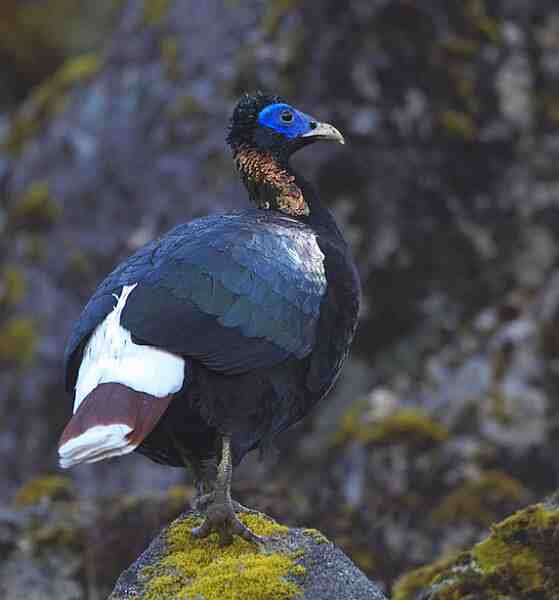
Lophophorus sclateri
Alpine Snow Goose,Lophophorus sclateri,Sclater's Monal,Crestless Monal
Features:The individuals are large, clumsy, and have a strong regularity in daily activities.
The white-tailed pheasant is called Sclater's Monal in English. It has three subspecies and is a large chicken.White-tailed pheasants mostly move alone. In the winter in Gaoligong Mountain, Yunnan, a group of 9 was seen living together. The time period and altitude of male bird activities have c...
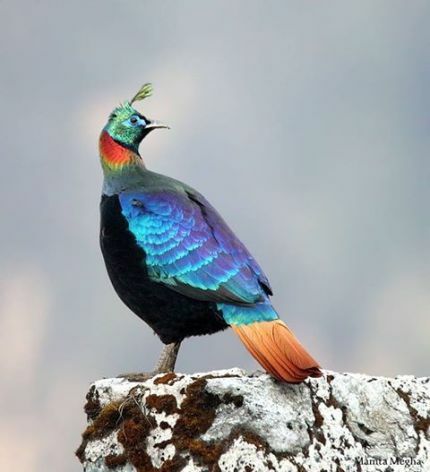
Lophophorus impejanus
Nine-color bird,Lophophorus impejanus
Features:The image is very beautiful, especially the colorful male bird
The foreign name of the brown-tailed rainbow pheasant is Himalayan Monal, and there is no subspecies.The brown-tailed rainbow pheasant often moves in groups, and sometimes forms a large group of 20-30 in winter. The natural conditions there are very harsh. The whole summer is almost always spent in...

Tragopan caboti
Horned chicken, turkey, longevity chicken,Tragopan caboti,Cabot's Tragopan,Yellow-billed Tragopan
Features:A bird native to China, considered the "giant panda among birds"
The foreign name of the yellow-bellied tragopan is Cabot's Tragopan, and there are 2 subspecies.The yellow-bellied tragopan is good at hiding and running. It often moves in dense undergrowth and grass under the forest. It generally does not take off unless it has to. They often move in small gro...
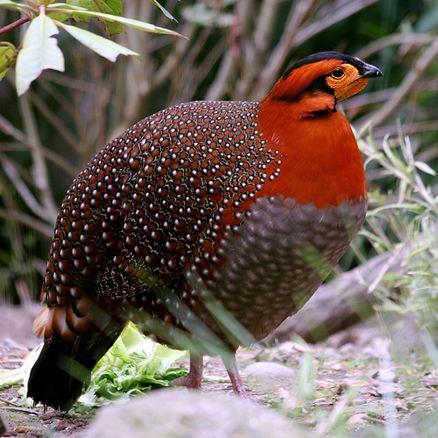
Tragopan blythii
Longevity chicken, gray-spotted pheasant,Tragopan blythii,Blyth's Tragopan,Grey-bellied Tragopan
Features:The most endangered species in the genus Tragopan
The Blyth's Tragopan is called Blyth's Tragopan in English, and has two subspecies.The Blyth's Tragopan is alert by nature, good at running, and generally rarely flies. When frightened, they often run fast or hide in dense forests and bushes, and only fly away when they have to. But the...
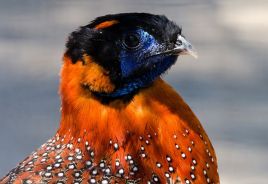
Tragopan satyra
Chaffinch,Tragopan satyra,Satyr Tragopan,Crimson Horned-pheasant,Indian Tragopan
Features:A gorgeous crimson tragopan native to the Himalayas.
The foreign name of the red-breasted tragopan is Satyr Tragopan, and there is no subspecies.The red-breasted tragopan mainly forages in the early morning and dusk, and likes to hide. Most of the time, it hides in the deep mountains and dense forests where few people go. It is cautious in its movemen...
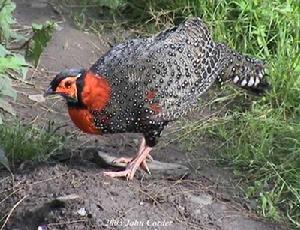
Tragopan melanocephalus
Western Tragopan,Tragopan melanocephalus,Western Tragopan,Black-headed Tragopan,Western Horned-pheasant
Features:The call is like a sheep, and the male bird's courtship display is complex (often ignored)
The foreign name of the black-headed tragopan is Western Tragopan, and there is no subspecies.The black-headed tragopan likes to move alone and forms small groups in winter. It has weak flying and dispersal abilities, and relatively poor ability to avoid natural enemies. It lives in dense forests, a...

Tetraophasis szechenyii
Yellow-throated pheasant, Sichuan pheasant quail, sheep-horn chicken,Tetraophasis szechenyii,Buff-throated Partridge,Szechenyi's Monal-Partridge
Features:There is a hint of yellow in the throat, and it will keep calling before the rain or snow.
The foreign name of the yellow-throated pheasant quail is Buff-throated Partridge or Szechenyi's Monal-Partridge. It has no subspecies and is a rare resident bird.Yellow-throated pheasant quail roosts on low branches at night. Except for the breeding season when they mostly move in pairs or alon...
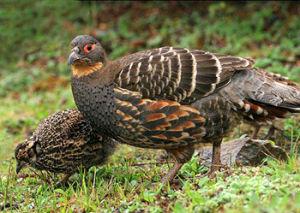
Tetraophasis obscurus
Red-throated Pheasant, Xikang Pheasant Quail, Sichuan Pheasant Quail, Muping Pheasant Ptarmigan,Tetraophasis obscurus,Chestnut-throated Partridge,Verreaux's Monal-Partridge
Features:Good at walking and running on the ground, and also good at gliding between valleys, but poor at flying.
Chestnut-throated Partridge, no subspecies.Chestnut-throated Partridge is usually found alone or in pairs, foraging in open areas near the forest line. They are good at walking and running on the ground, and also good at gliding in the valleys, but their flying ability is poor, and they rarely take...

Lyrurus tetrix
Black pheasant, black chicken,Lyrurus tetrix,Black Grouse
Features:It is named after its shape, which is very similar to the guqin.
The Black Grouse is divided into 7 subspecies according to feather color and body shape. There are 3 subspecies in China, namely Xinjiang subspecies, northern subspecies and northeastern subspecies. There are differences in the body feathers of these 3 subspecies. The difference in the body feathers...
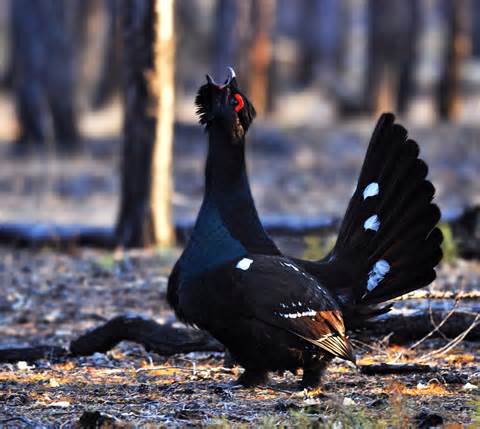
Tetrao parvirostris
Grouse, wood chicken,Tetrao parvirostris,Black-billed Capercaillie
Features:The male and female have black beaks, feet and toes, and cinnamon irises, but the plumage is quite different.
The black-billed grouse is called Black-billed Capercaillie in foreign language, and there are 3 subspecies.The activities and foraging of black-billed grouse are all during the day, starting at dawn and not stopping until dusk. They are good at walking on the ground, and generally seldom fly except...
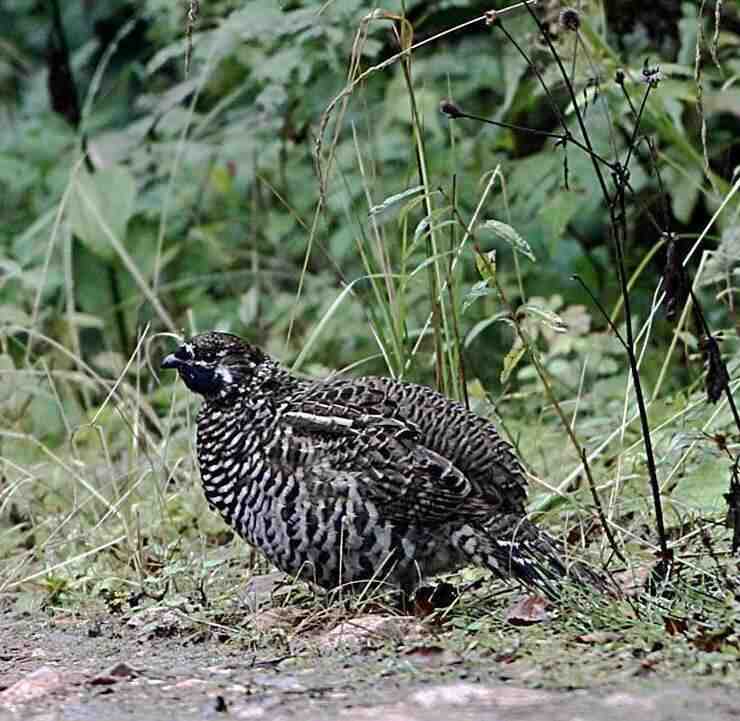
Bonasa sewerzowi
Lamb horn chicken,Bonasa sewerzowi,Chinese Grouse
Features:The iris is brown, the beak is dark brown, and the feet are yellow
The foreign name of the spotted-tailed hazel pheasant is Chinese Grouse, which is divided into two subspecies, namely the nominative subspecies (T.s.sewerzowi) and the Sichuan subspecies (T.s.secunda). The difference between the two is that the Sichuan subspecies has a thicker chestnut head and blac...
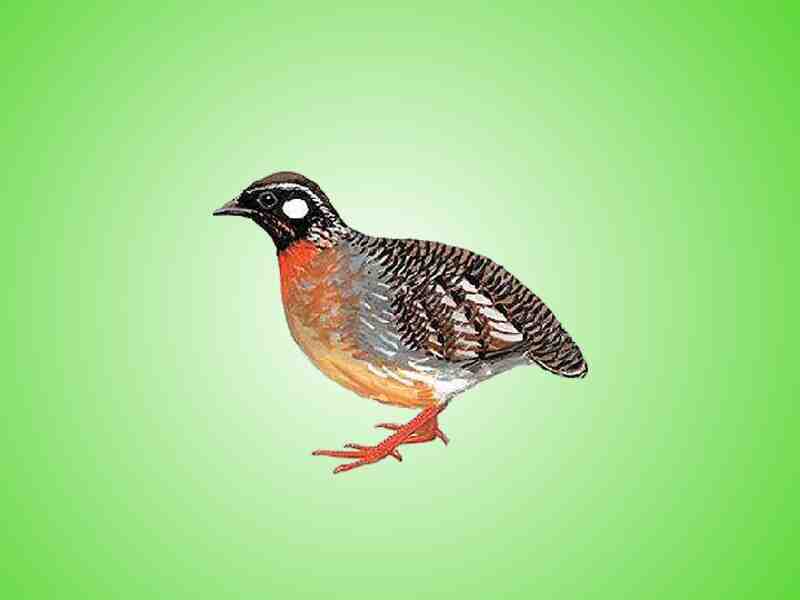
Arborophila ardens
Arborophila ardens,Hainan Partridge, Hainan Hill-partridge, White-eared Hill-partridge, White-eared Partridge,Yamaaka
Features:It is a pheasant species that is unique to China and is only found in Hainan Province.
Hainan Partridge is called Hainan Partridge in foreign language, and has no subspecies.Hainan Partridge often forages in pairs or small groups of 4-5, at the bottom of the ditch, at the foot of the slope, or where fallen leaves are piled up on the hillside. They roost in trees at night. It is alert...
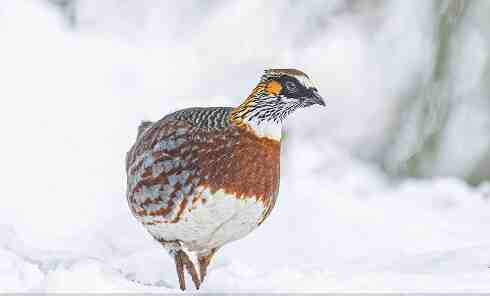
Arborophila rufipectus
Arborophila rufipectus,Sichuan Partridge,Bamboo shoot chicken, bamboo shoot chicken, and Tuo Tuo chicken
Features:It is a medium-sized, brightly colored mountain partridge.
Sichuan Partridge, also known as Sichuan Partridge in English, has no subspecies and is a rare and endemic pheasant native to southwest China. Sichuan Mountain Quail often moves alone or in small groups of 5-6. It is alert and good at hiding. It runs fast on the ground. When...
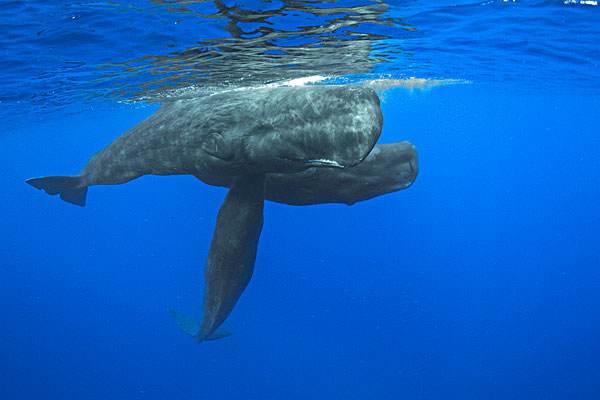
Physeter macrocephalus
Physeter macrocephalus,Sperm Whale, Cachelot, Pot Whale, Spermacet Whale ,Cachalot , Ballena Esperma, Cachalote, Giant Sperm Whale, Kacherat Whale
Features:The sperm whale has the largest brain in the animal kingdom, and its intestinal secretion is the famous "ambergris"
Sperm Whale, with no subspecies, has the largest brain in the animal kingdom.Sperm whales like to live in groups, often with a few male whales and a large group of female whales and calves forming a large group of more than dozens, or even two or three hundred. They migrate north and south every yea...

Neophocaena asiaeorientalis
Neophocaena asiaeorientalis,Yangtze Finless Porpoise,Narrow-ridged Finless Porpoise, Finless Porpoise,Neophocaena asiaeorientalis asiaeorientalis,Yangtze River Porpoise, Narrow-ridged Porpoise Yangtze
Features:The last remaining cetaceans in the Yangtze River
The Yangtze Finless Porpoise was once considered a subspecies of the narrow-ridged porpoise together with the East Asian finless porpoise. It was recognized as an independent species in 2018, which increased the number of cetacean species from 89 to 90. This also marks the addition of another endemi...

Oxyura leucocephala
Oxyura leucocephala,White-headed Duck
Features:It is recognized as a globally endangered bird species and is the prototype of Donald Duck in the cartoon.
The white-headed hardtail duck is a very typical gregarious water duck. It breeds in Tianshan Mountain in Xinjiang and is occasionally seen in Honghu Lake in Hubei. It is a summer migratory bird in Xinjiang and an occasionally stray bird in Hubei. It mainly forages by diving, and often sticks its he...

Platanista gangetica gangetica
Platanista gangetica gangetica,Ganges River Dolphin,White puffer fish, Goto puffer fish
Features:The dolphin was blinded by the muddy river water.
The Ganges River Dolphin is a nominative subspecies of the South Asian river dolphin.The Ganges River Dolphin looks like a crocodile. When breathing, it often floats to the surface at a certain angle, so it may be mistaken for a crocodile in some areas. The entire head and beak of the Ganges River d...
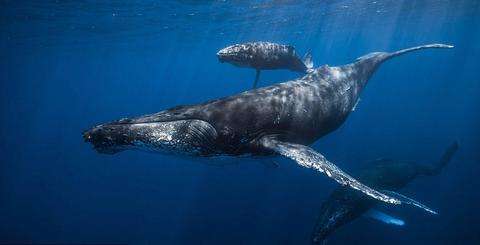
Megaptera novaeangliae
Megaptera novaeangliae,Humpback whale,Humpback whale, humpback whale, saw-armed whale, saw-armed whale
Features:Humpback whales have extraordinary navigation abilities and will not deviate more than 5 degrees from their migratory route.
Humpback whale is not the largest whale in the world, but it is also a well-deserved giant in the ocean.Humpback whales mostly move in pairs, are gentle in temperament, and have a strong attachment to their companions. Every year, they migrate regularly from north to south: in summer, they migrate t...
